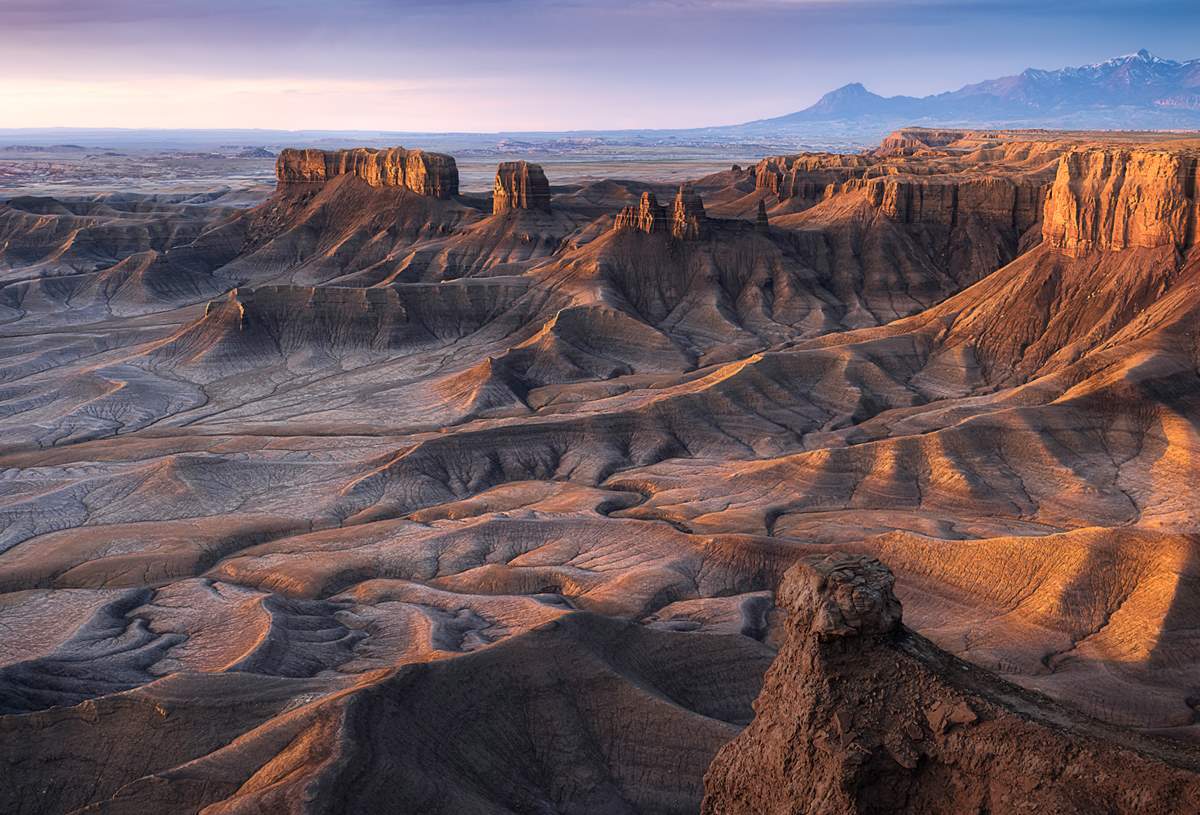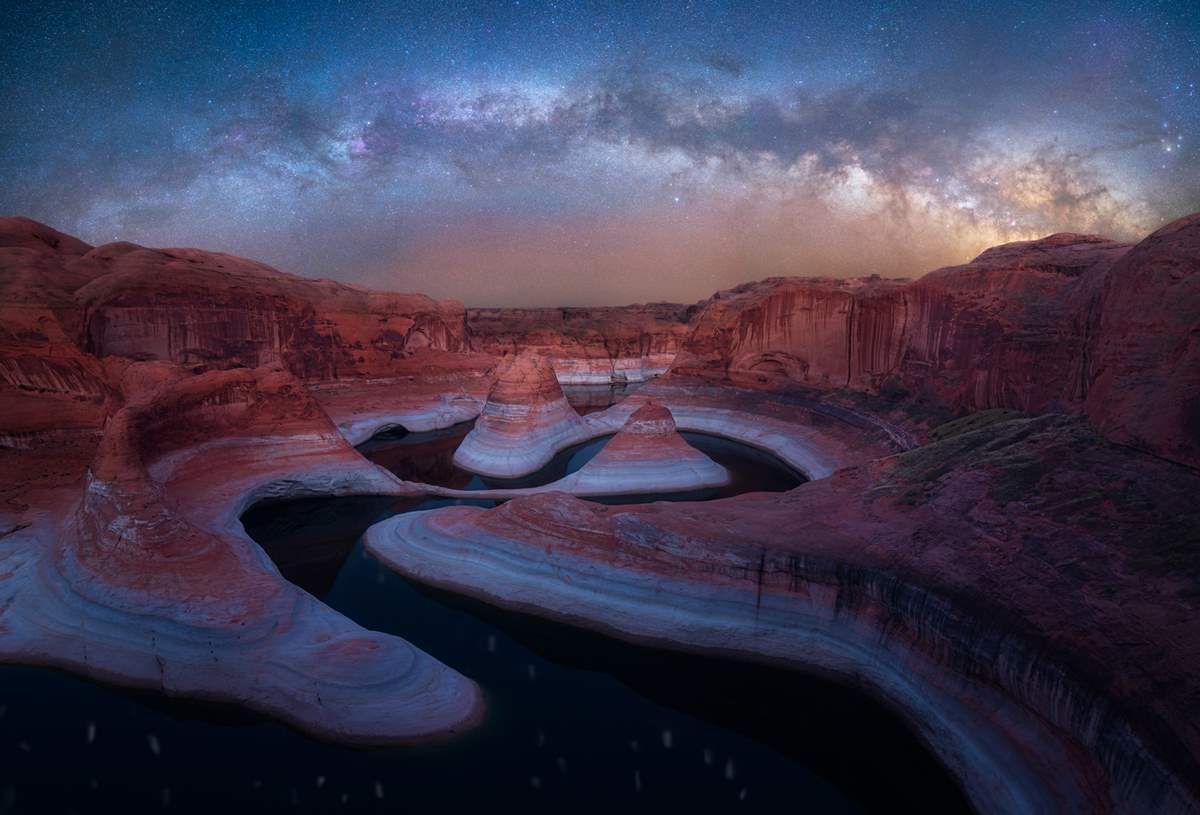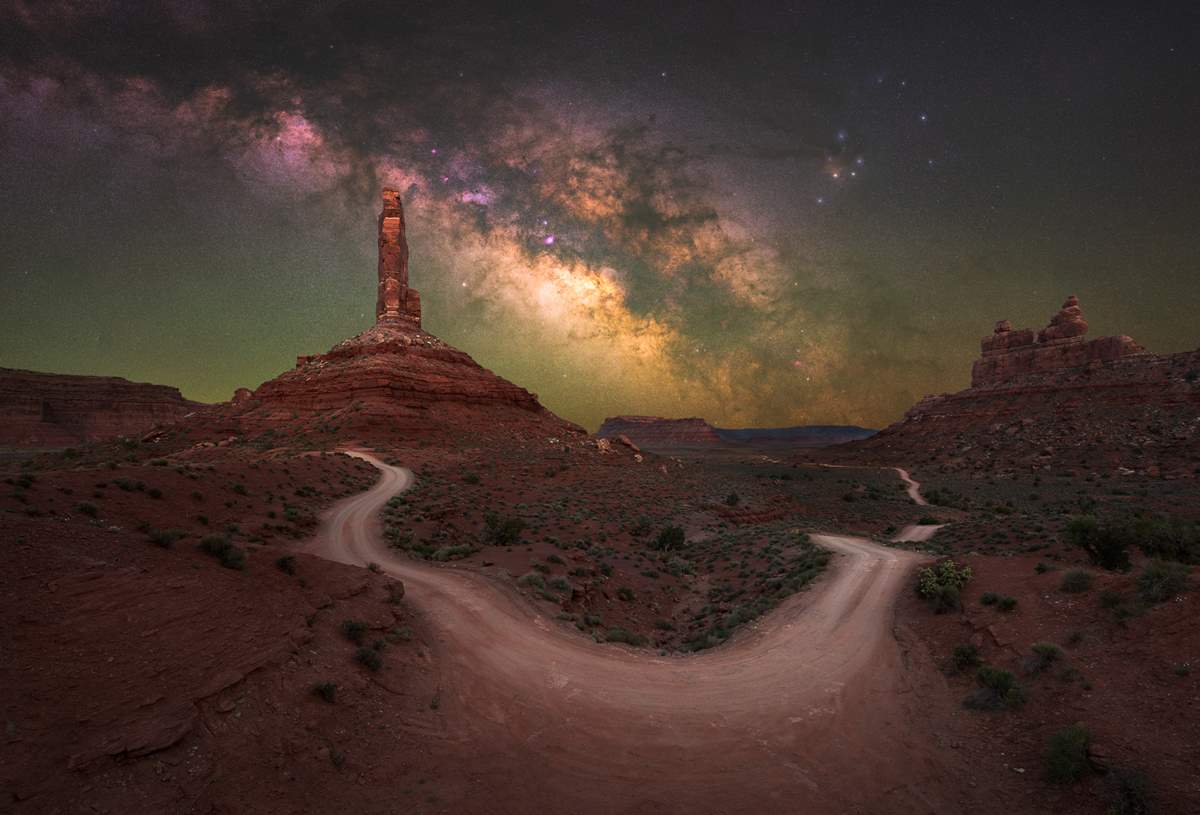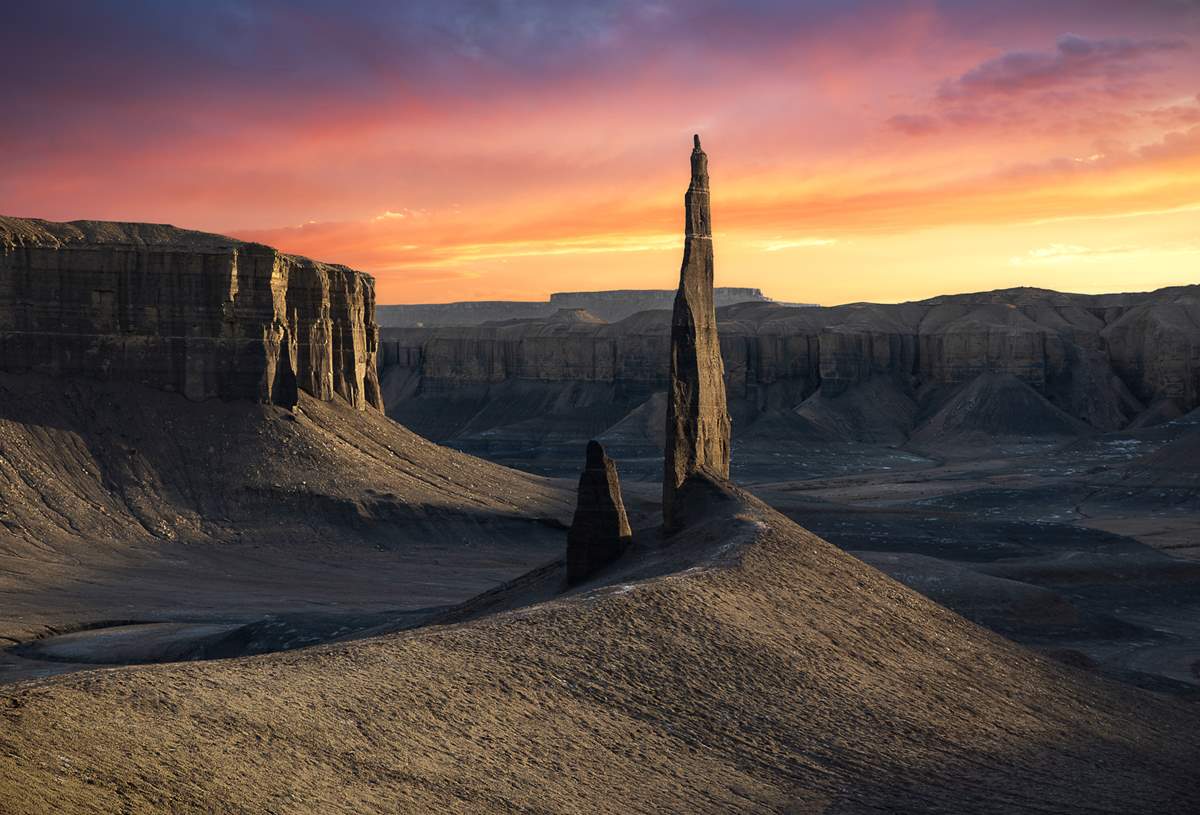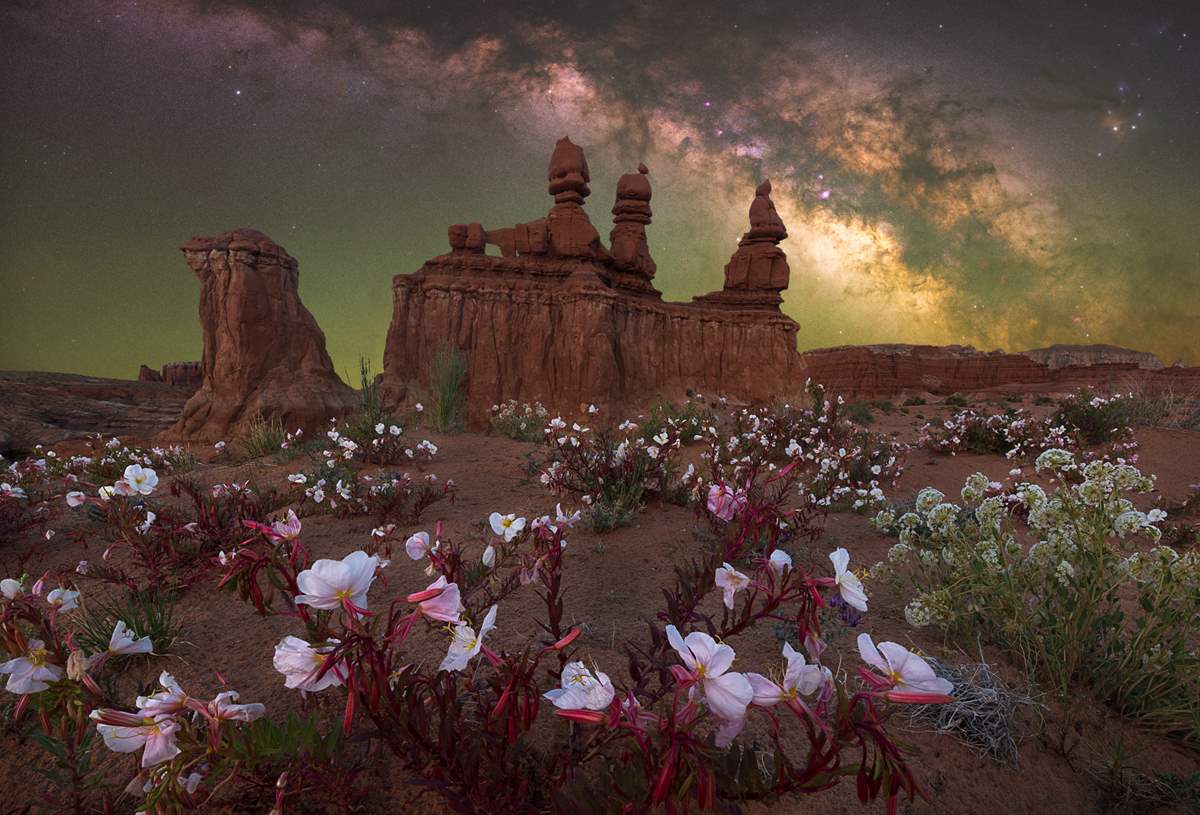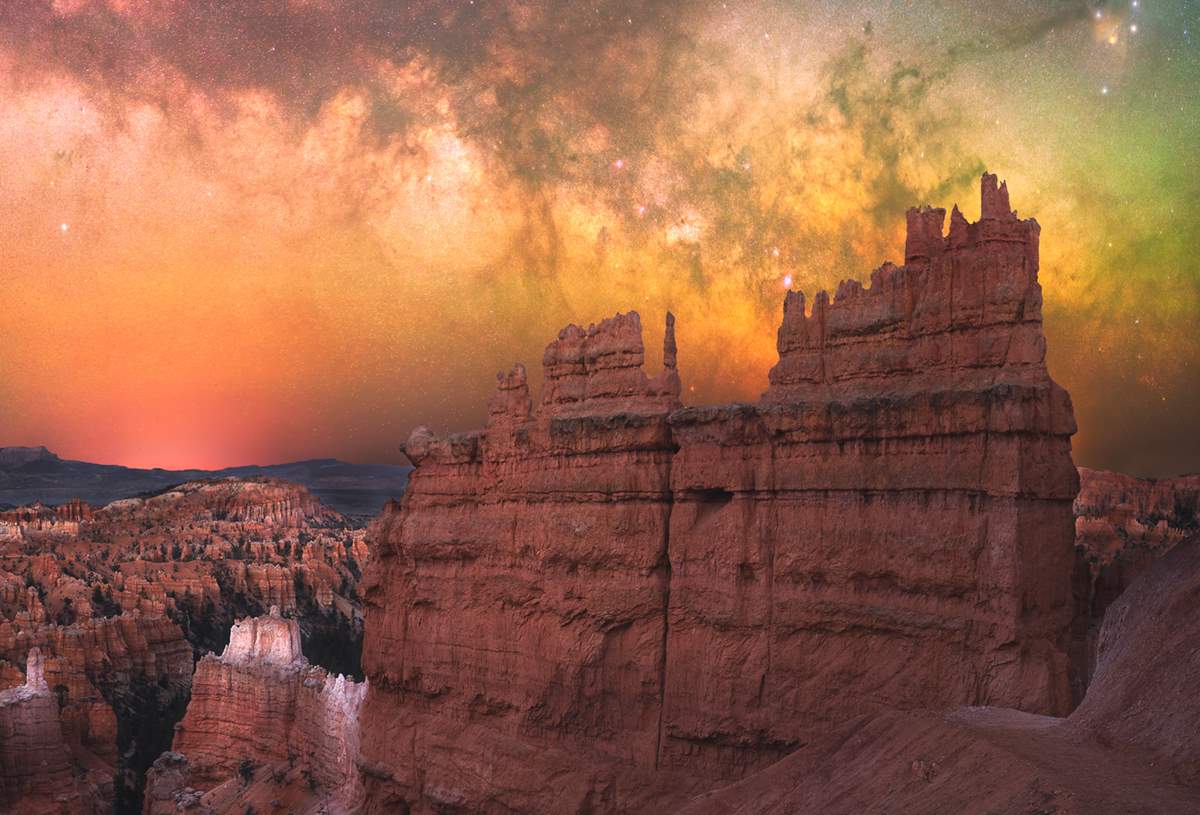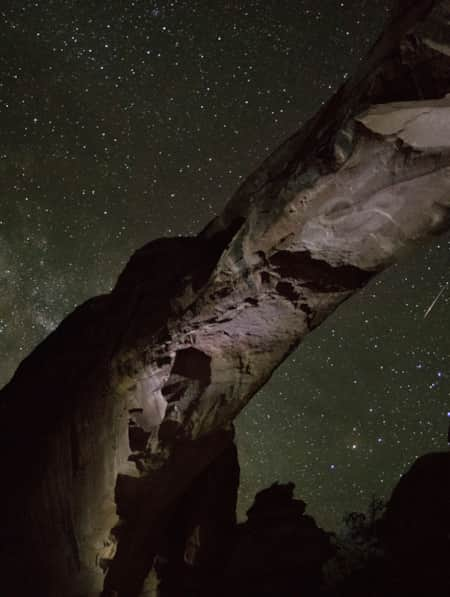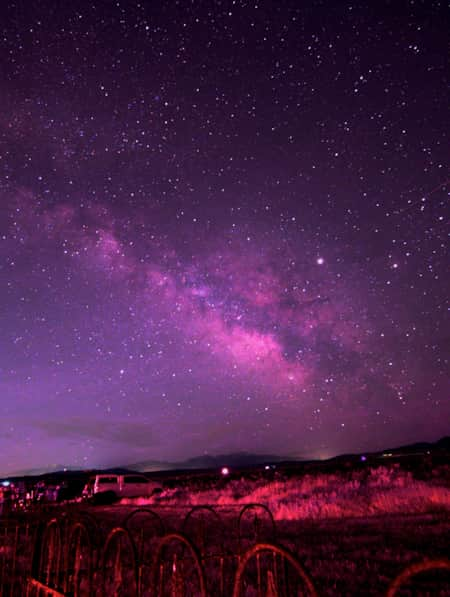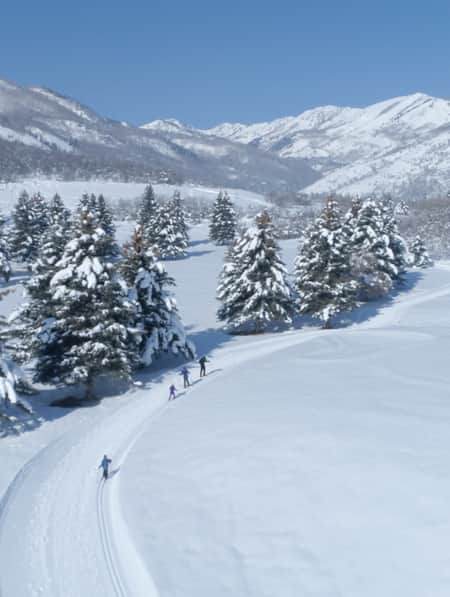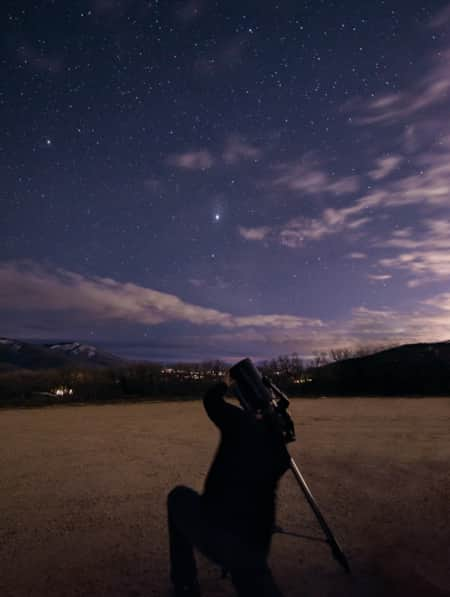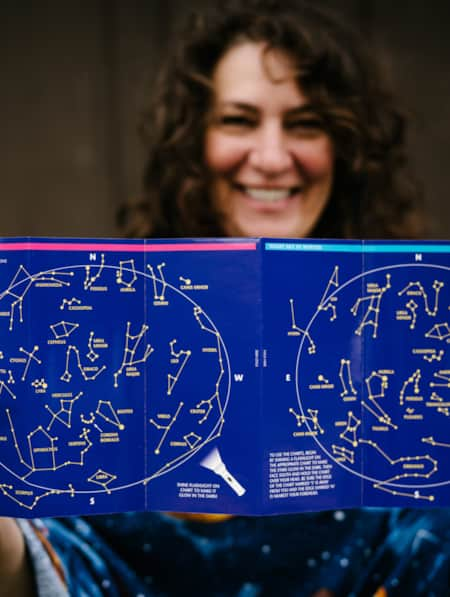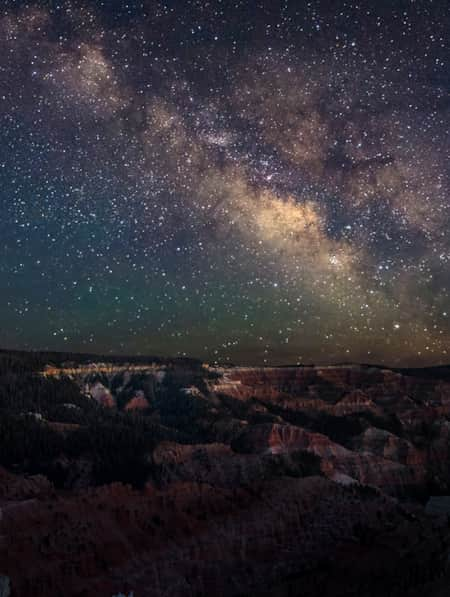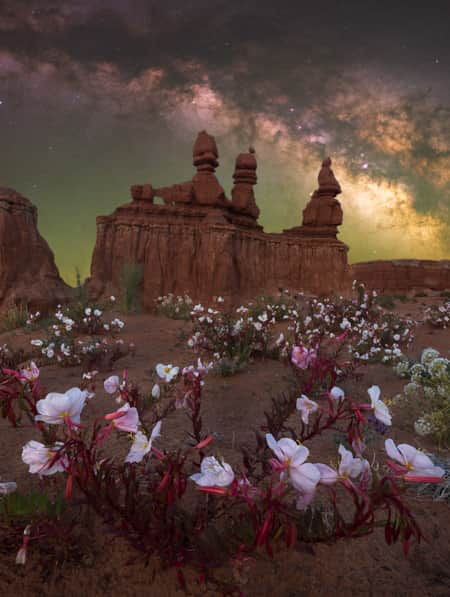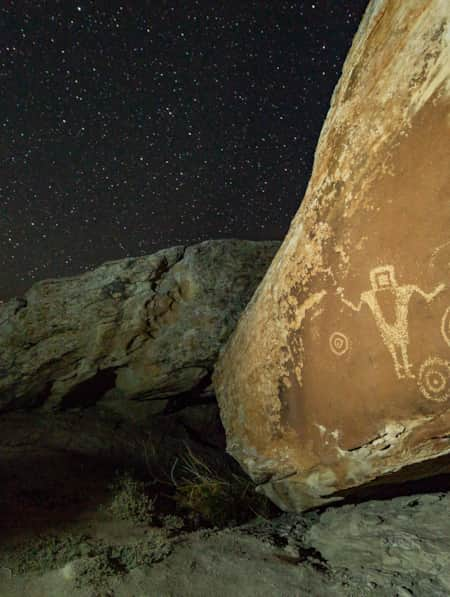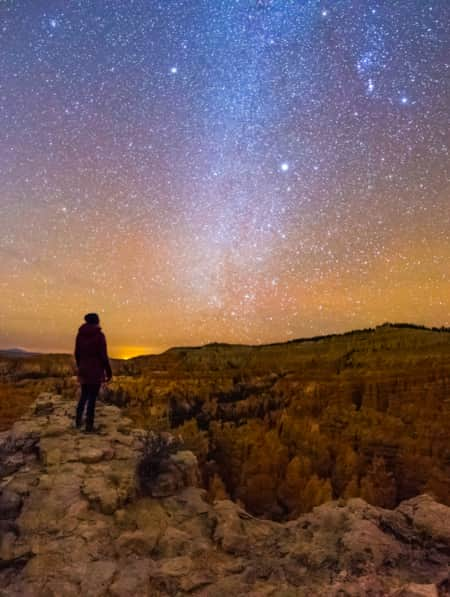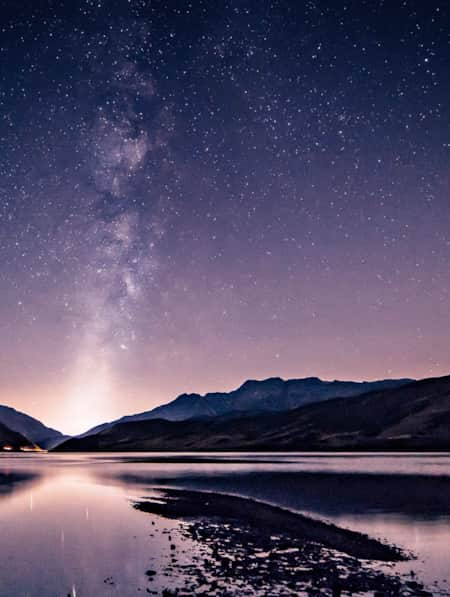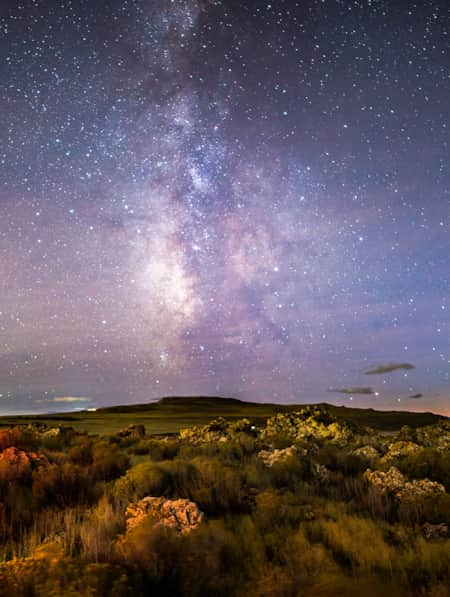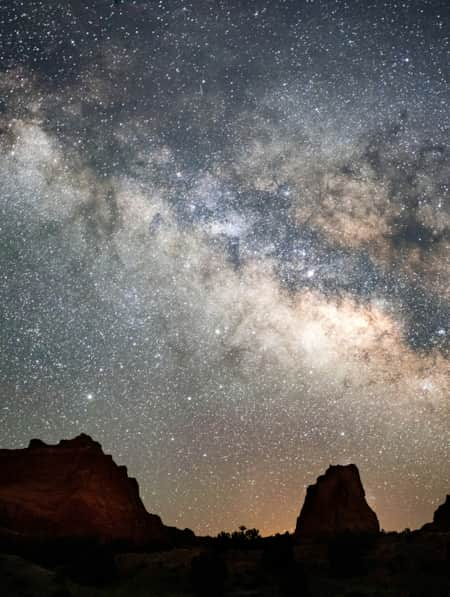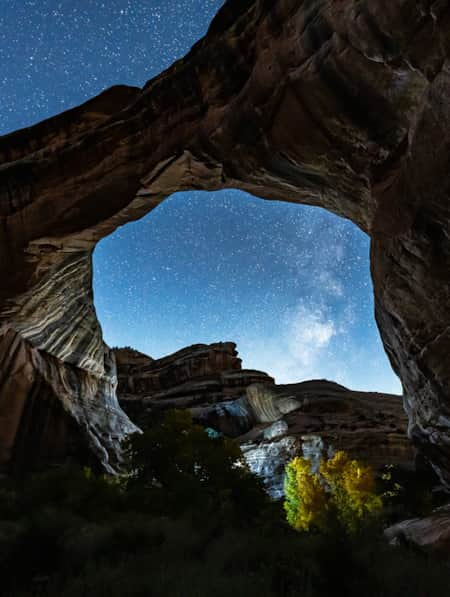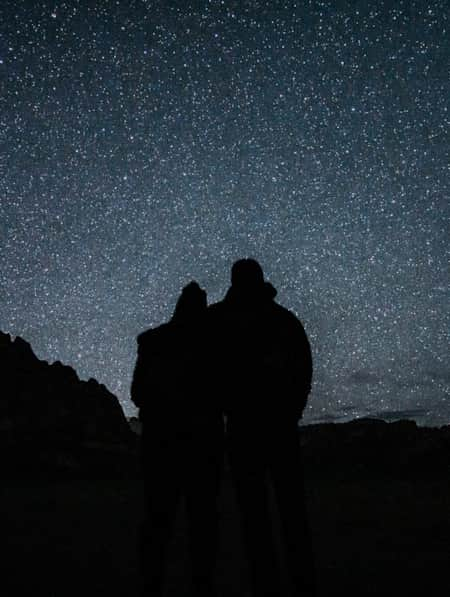Following the Stars
Photography By Marcin Zając
For our ancestors, the observable universe beyond our atmosphere was of the utmost significance. The starry night sky once served as the sole reference for when to plant crops and inspired myths that remain culturally relevant today. Now with so much of the world in perpetual twilight, many never see a naturally dark night sky. Utah however, part of The Great Western Starry Way of the Intermountain West, is lucky to boast the highest concentration of internationally-certified dark sky locations in the world.
Marcin Zając, an internationally acclaimed photographer, has perfected the craft of exposing what is usually invisible to the naked eye. Here he sets out on a quest to capture the brilliance of Southern Utah's dark skies. Using advanced techniques combined with a keen eye for composition, Zając shows us the magnitude of our universe that's visible from Utah's spectacular landscapes.
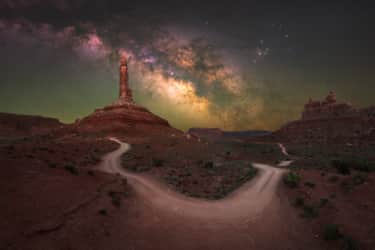
Valley of the Gods is located in the southeastern corner of the state. While similar to the geography found at Monument Valley to the south, this Bureau of Land Management area sees much less traffic, thereby adding solitude to its many virtues.
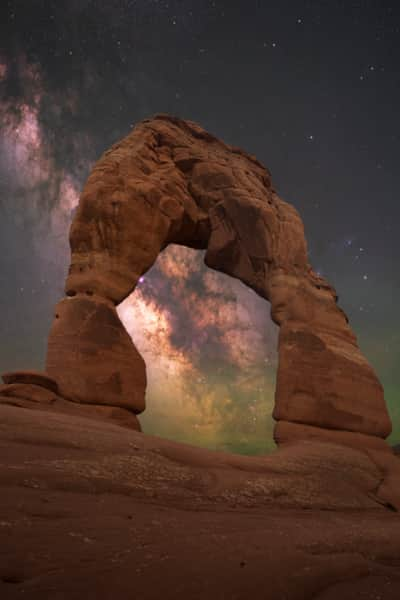
Heading north from Valley of the Gods on U.S. Route 191, you'll find Arches National Park. Arches park rangers have led regular astronomy programs and special events since at least 2012. They regularly work with staff from nearby dark sky parks to offer Moab-area visitors an opportunity to explore the night sky.
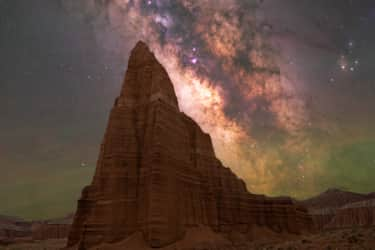
Southwest of Arches, lies Capitol Reef National Park. It’s remote Cathedral district has some of the most stunning views around, including the iconic monolith, Temple of the Sun.
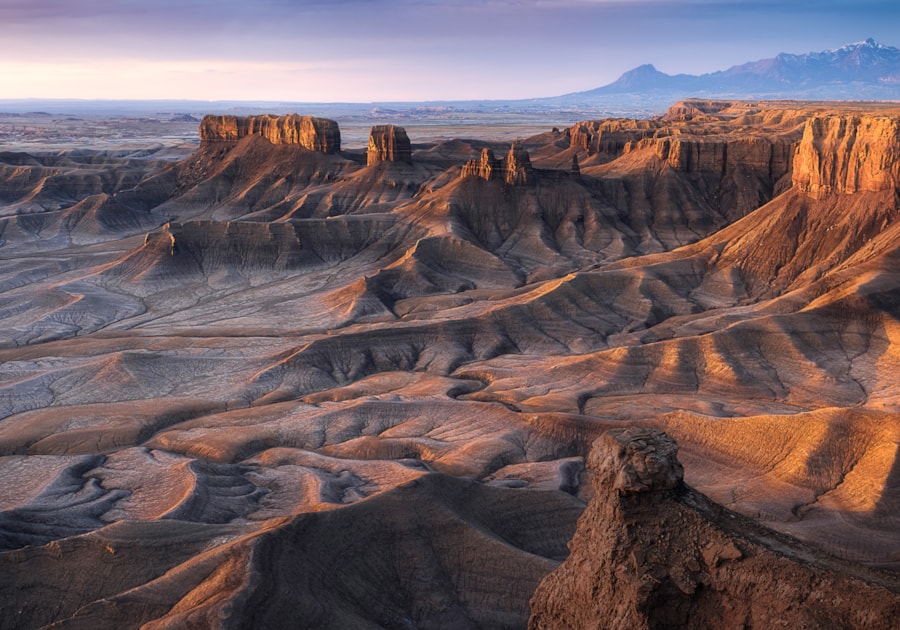
As the sun rises in Capitol Reef country, the stars dissipate but the stunning landscape takes hold.
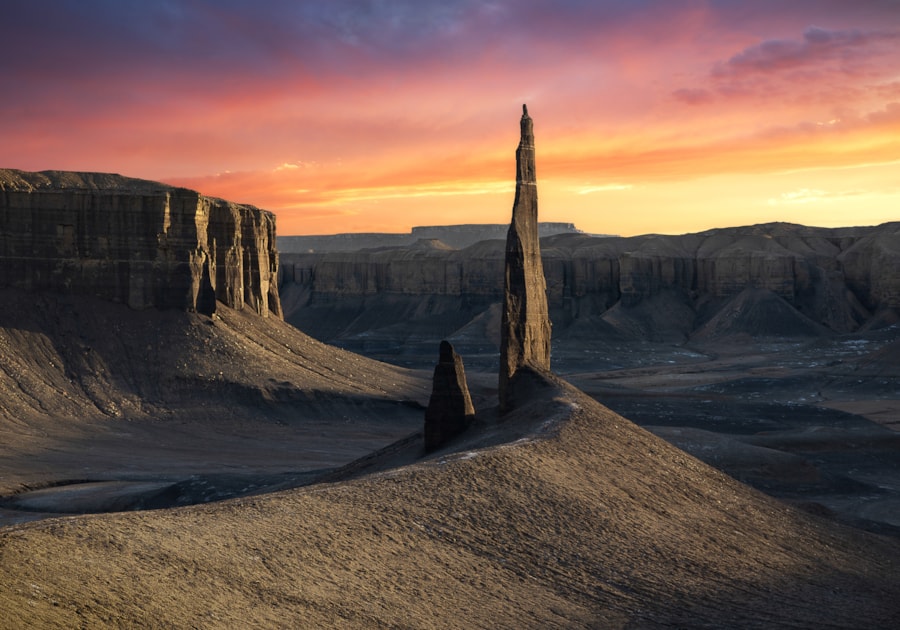
It's not unusual to hear the landscape near Capitol Reef described as lunar. This spire is accessible from a dirt road just seven miles west of Hanksville, Utah.
"If the stars should appear one night in a thousand years, how would men believe and adore ... But every night come out these envoys of beauty, and light the universe with their admonishing smile."
– Ralph Waldo Emerson
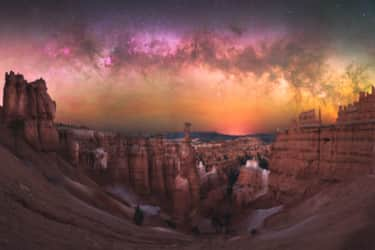
Southwest of Capitol Reef, Bryce Canyon National Park has one of the nation’s oldest astronomy programs.
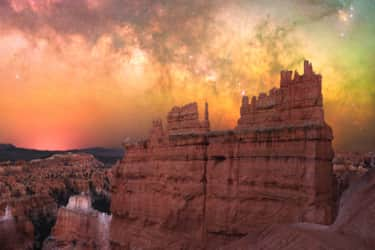
Bryce Canyon is known for its crimson-colored “hoodoos,” which are spire-shaped rock formations. The park’s main road leads past the expansive Bryce Amphitheater, a hoodoo-filled depression lying below the Rim Trail hiking path.
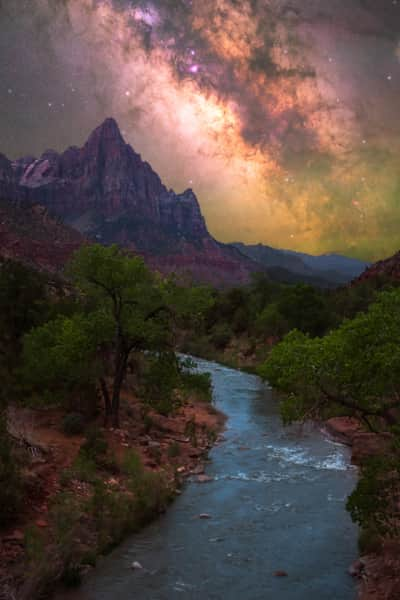
Continuing to the southwest corner of the state, Zion National Park falls under a dark sky of endless stars. Many visitors may gaze into Zion’s dark skies to find more stars than they’ve ever seen before. When you enter the park, you leave the ambient light of every-day life, making every detail of the night sky more visible.
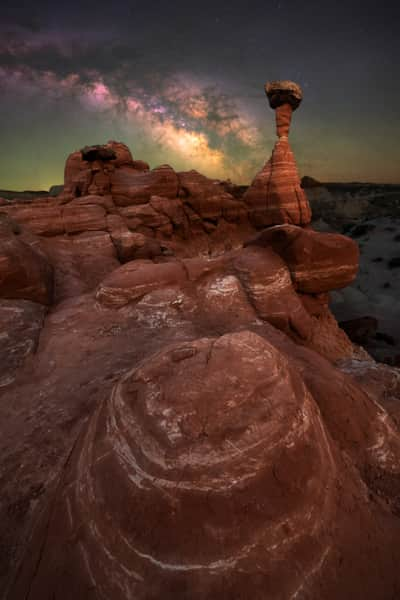
Grand Staircase-Escalante National Monument in the south-central region of the state is home to The Toadstools. The balanced rock formations here look like mushrooms and offer awe-inspiring views that enchant. The toadstools are easy to access along an easy to moderate 1.5-mile round-trip hike.
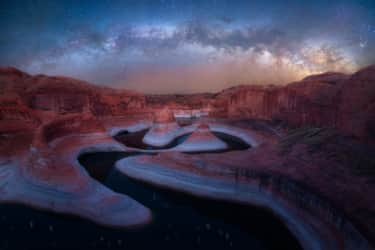
Just east of Grand Staircase lies the Glen Canyon National Recreation Area. This Milky Way vantage point at Reflection Canyon is like no other, but its lengthy out-and-back hike requires endurance and preparation.
"I find it fascinating that my camera can capture more than my eyes can see – the color and the detail in the night sky you can record with modern cameras are astonishing ... First and foremost, I look for an interesting composition where there is a balance between the landscape in the foreground and the sky."
– Marcin Zając

About the Photographer – Marcin Zając
Marcin Zając is a landscape photographer from Poland based in Northern California. When he's not chasing light with his camera, he works as a software engineer. His work has been recognized by several photography competitions. He was shortlisted for Astronomy Photographer of the Year, organized by the Royal Museum Greenwich, in 2019, 2020, 2021 and 2022, and won the People's Choice award in 2021. He was awarded NASA's Astronomy Picture of the Day in 2020 and placed among the world's top 101 photographs in the International Landscape Photographer of the Year 2021 competition, the world's most prestigious landscape photography contest. Instagram: @mrcnzajac
Stargazing in Utah
Of the vast amount of certified International Dark Sky Parks and Communities that are part of a catalog of the finest dark skies in the world, the highest concentration are in Utah. Explore the statewide locations and make plans for experiencing natural wonders after the sun sets.
Utah's Certified Dark Sky Parks
Read the Stories
-

Dark Skies in Capitol Reef National Park
Written By Matcha
Capitol Reef National Park in Utah is a designated International Dark Sky Park. Make plans to come see the most magnificent night sky ever!
-

State Park Stargazing: Interacting With the Galaxy in Real Time
Written By Whitney Childers
4 minute read
Northern Utah's Camp Floyd State Park offers more than history to those who stick around after dark. With intense dark skies blanketing the atmosphere, stargazers of all ages gather to interact with the galaxy above.
-

Find a Winter Refresh in a Utah State Park
Written By Rosie Gochnour Serago
4 minute read
The best Utah state parks will entice you with ice fishing, white sand and snow-dusted scenery. Take a winter break to refresh with a visit to a few of these places.
-

A Closer Look at North Fork Park
Written By Paula Colman
4 minute read
Welcome to North Fork Park, one of Utah’s multiple International Dark Sky Parks, just minutes from downtown Ogden. While it is best known for its stunning scenery where hikers and Nordic skiers can meander the trails swirling through the mountainous Ogden Valley, its biggest attraction lies in the voluminous sky directly above.
-

Reclaiming the Stars: Utah’s Dark Sky Initiative
Written By Austen Diamond
4 minute read
Utah's Dark Sky Initiative helps state park visitors experience the cosmos by protecting night skies, encouraging astrotourism and promoting stargazing.
-

A Party of Astronomic Proportions
Written By Matcha
Every Saturday from May through Labor Day weekend, weather dependent, crowds ranging from 100 to 500 people gather at Cedar Break’s main overlook, Point Supreme, to gaze up at the region’s amazing dark skies and explore the stars and the planets that make up the solar system.
-

How to Stargaze in Utah
Written By Whitney Childers
7 minute read
Tips on what to pack and when and where to go stargazing in Utah.
-

Where to Find the Darkest Skies in Central Utah
Written By Matcha
5 minute read
A tapestry of thousands of stars awaits visitors to Helper and Price where conditions are some of the best for exploring the night sky.
-

Discover Utah’s Top Stargazing Spots
Written By DarkSky International
5 minute read
A Q&A with astrophotographer Bettymaya Foott on the wonder of the night sky and the best places to spot the stars in Utah.
-

Looking Up: Dark Skies of Heber Valley
Written By Kristen Pope
3 minute read
A trio of state parks in Heber Valley offer stellar views of the Utah night sky. Come stargaze here.
-

Ogden Activities: Downtown to Dark Skies
Written By Paula Colman
5 minute read
Two days' worth of sun-up-to-sundown Ogden activities — eat, shop and bike where the locals go, end at an International Dark Sky park.
-

Seeking Starry Skies Near Salt Lake City
Written By Haley Rodgers
3 minute read
You don’t have to go far from the city to find dark skies filled with stars in Utah. Find out where you can see the Milky Way near the city or gaze into space from an observatory in Northern Utah.
-

Tips for Astrophotography
Written By Visit Utah
3 minute read
Need tips on how to take pictures of stars? Utah is the perfect location to put tips from an award-winning photographer into action.
-

The World's First Dark Sky Park
Written By Matcha
On March 6, 2007, Natural Bridges National Monument became the first International Dark Sky Park certified by the International Dark-Sky Association. More than 100,000 people visit Natural Bridges each year to check out the stunning bridges and hike in cool canyons, but only a handful of them stay through the night to see the area’s most amazing and unique feature: dark skies and glistening, bright stars.
-

Feeling Small in Big Country With Stargazing Zion
Written By Brian Higgins
4 minute read
On an expert-led stargazing tour of Zion National Park, an astronomy guide illuminates the brilliance of the cosmos.
